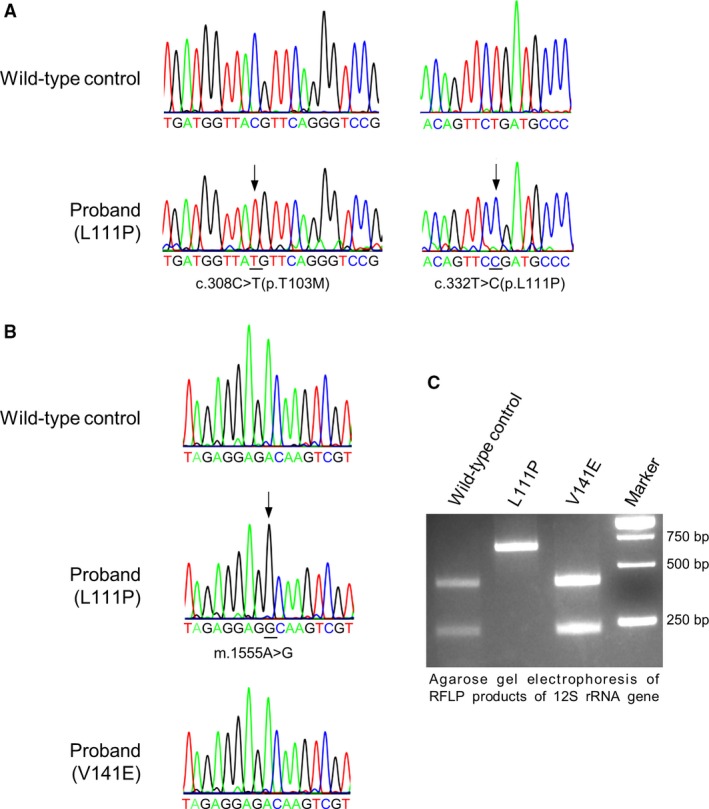Figure 1.

COQ7 gene variants and a mitochondrial DNA mutation identified in the patient under study. (A) COQ7 gene variants. Sequencing chromatograms are shown for the c.308C>T and c.332T>C variants detected in COQ7 in the proband reported in this study, with the wild‐type sequence at the top. The chromatograms also show that the patient is homozygous for both the c.308C>T [p. Thr103Met] polymorphism and the c.332T>C [p.Leu111Pro] mutation. (B) Chromatograms showing a partial sequence of the mitochondria 12S rRNA gene in a normal control, the L111P patient reported in this study or the previously reported COQ7 patient carrying the V141E mutation. Both patients and the normal control used in this study carry the m.1438A>G polymorphism. The L111P patient, in addition, carries the m.1555A>G mutation. Black arrows denote altered nucleotides. (C) RFLP of mitochondrial DNA. Shown is an agarose gel electrophoresis of PCR products from the mitochondrial 12S rRNA gene digested by BsmAI. Wild‐type control: skin fibroblasts from a healthy unrelated individual; L111P: the proband reported in this study; V141E: COQ7 patient previously reported in 19. The PCR product (643 bp) without the m.1555A>G mutation was cleaved in two fragments of 409 and 234 bp, which was the case for the wild‐type control and the V141E patient. The PCR product from the L111P patient's 12S rRNA gene was not cut by BsmAI, as the m.1555A>G mutation abolishes the BsmAI restriction site. Moreover, only a single band corresponding to the mutated fragment was seen in the sample from the L111P patient. This, together with the sequencing chromatogram, demonstrates homoplasmy for the m.1555A>G mutation.
